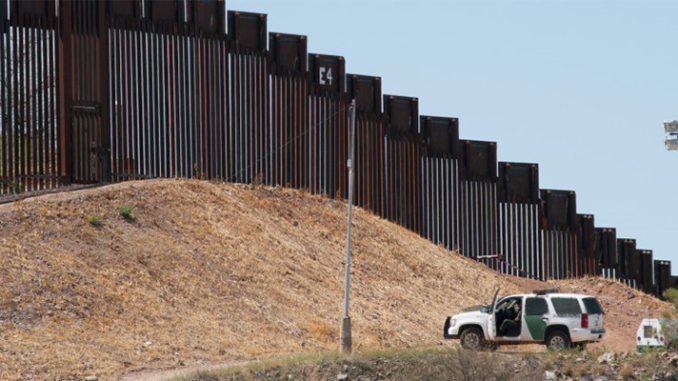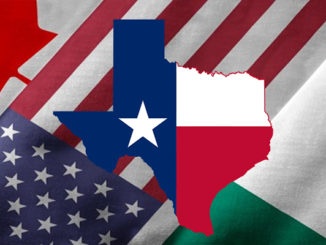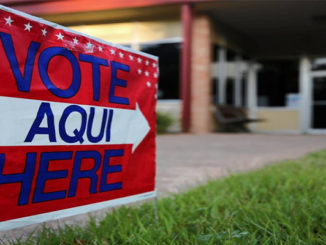
by Alex Nowrasteh
President Trump tweeted this morning that, “One of the reasons we need Great Border Security is that Mexico’s murder rate in 2017 increased by 27% to 31,174 people killed, a record! The Democrats want Open Borders. I want Maximum Border Security and respect for ICE and our great Law Enforcement Professionals!” He tweeted this because he’s spent the last few days stating that he would shut down the government if Congress did not adopt his immigration proposed reforms in the upcoming budget debate, especially the funding for the construction of a border wall.
Besides the political motivation for his tweet, President Trump seems to have assumed that crime in Mexico bleeds north into the United States, so more border security is required to prevent that from happening as murder rates begin to rise again in Mexico. Although illegal immigrant incarceration rates are lower than they are for natives, illegal immigrant conviction rates in the border state of Texas are lower for almost every crime including homicide, and the vast majority of evidence indicates that illegal and legal immigrants are less crime-prone than natives, the President’s specific claim that murder rates spread from Mexico to the United States is different from most of the existing peer-reviewed literature.
My colleague Andrew Forrester and I ran some simple regressions to test whether higher homicide rates in Mexican states that border the United States spread northward to U.S. states on the other side of the border. It doesn’t make much sense to compare Mexican crime in the Yucatan Peninsula with that in Maine but, if President Trump’s theory is correct, then we should expect to see it cross from Baja California to California, for instance. Homicide data for the Mexican border states come from the Mexican National Institute of Statistics and Geography. American homicide data come from the Uniform Crime Reporting statistics at the FBI (files here). Homicide rates in states in both countries are per 100,000 state residents which allows an apples-to-apples comparison. We used data from 1997 through 2016 but were not able to include 2017 as U.S. crime data is unavailable for the American states although it is available for the Mexican states. We decided to look exclusively at U.S. and Mexican border states because those are where we would expect crime to bleed over if such a thing happened.
Figure 1 shows a negative relationship between homicide rates in U.S. border states and Mexican border states with a negative correlation coefficient of -0.46. The coefficient is nearly identical when Mexican homicide rates in the previous year are compared to American homicide rates in the following year. Although we did not include other controls, there is a negative relationship between homicides on the American side and the Mexican side. In other words, when Mexican homicide rates go up then American rates tend to go down and vice versa.
Figure 1
Note: Rates are per 100,000 residents in each state.
Figure 2 shows the same data but with years on the X-axis. Mexican border state homicide rates vary considerably over time, especially when that government decided to try to crack down on drug cartels, but U.S. border state homicide rates trended slowly downward over the entire time. There is a negative relationship between Mexican homicide rates and homicide rates in U.S. border states.
Figure 2
Note: Rates are per 100,000 residents in each state.
Our figures and regressions above might not be capturing the whole picture. Perhaps crime travels from Mexican border states and goes directly into the U.S. state that it is bordering. That could be the source of President Trump’s worry. We tested that in Figures 3-6 where we looked at how homicide rates in Mexican states contiguous to U.S. states are correlated with homicide rates there.
Figure 3 shows homicide rates in the Mexican state of Baja California and in the American state of California. There is a negative correlation coefficient of -0.66 between homicide rates in Baja California and in California, meaning that homicide rates move in the opposite directions in these two states.
Figure 3
Note: Rates are per 100,000 residents in each state.
Figure 4 compares homicide rates in Arizona with those in Baja California and Sonora. Homicide rates between Baja California and Arizona have a correlation coefficient of -0.69, meaning that homicide rates in Baja California and Arizona generally move in opposite directions. Homicide rates in Arizona and Sonora have a correlation coefficient of +0.20, which means that they somewhat move in the same direction.
It’s important to point out that the Sonoran homicide rate moves in roughly the same direction as Arizona’s homicide rate because Sonora’s rate mostly declines over the entire period and varies little by year just as Arizona’s rate does. The Sonoran homicide rate will most closely track homicide rates in other American states for that reason but that does not show that Mexican murderers are crossing the border because Sonora is not as affected by the violent homicide swings that seem to dominate homicide rates in other Mexican states. The Sonoran homicide rate comoves with Arizona’s homicide rate since they are both less volatile over time.
Figure 4
Note: Rates are per 100,000 residents in each state.
Figure 5 shows that homicide rates in New Mexico are positively correlated with those in Sonora at Chihuahua with coefficients of +0.40 and +0.05, respectively. New Mexico’s homicide rate is more erratic and has a higher standard deviation than the other American states.
Figure 5
Note: Rates are per 100,000 residents in each state.
Homicide rates in Texas are negatively correlated with homicide rates in the Mexican states of Coahuila, Nuevo Leon, and Tamaulipas with correlation coefficients of -0.79, -0.79, and -0.36, respectively.
Figure 6
Note: Rates are per 100,000 residents in each state.
Correlation is not causation, especially in these simple regressions, but it would be very difficult to show that Mexican homicide rates are driving or at least influencing those in U.S. border states without at least finding a positive correlation. The p-values in all of the above figures are all so high that the correlations are statistically insignificant in every case. Researchers should dig into this data further to tease out more precise estimates or effects, but they are not significant or interesting enough for us to spend more time on them. There are, of course, individual circumstances of Mexican criminals committing crimes in American states but that does not tell us how common those events are or whether President Trump’s proposed solutions would have any impact. If the past events are any indication of the future, our work above allows us to confidently say that there is little reason to worry that homicide rates in Mexican border states will influence homicide rates in U.S. border states. Whatever potential justifications there are for an expensive border wall, preventing the spread of homicide northward shouldn’t be one of them.
Special thanks to Andrew Forrester for his help in writing this piece.
Alex Nowrasteh is a senior immigration policy analyst at the Cato Institute’s Center for Global Liberty and Prosperity. His popular publications have appeared in the Wall Street Journal, USA Today, the Washington Post, and most other major publications in the United States. His peer-reviewed academic publications have appeared in the Journal of Economic Behavior and Organization, Economic Affairs, the Fletcher Security Review, the Journal of Bioeconomics, and Public Choice. Alex regularly appears on Fox News, MSNBC, Bloomberg, and numerous television and radio stations across the United States. He is a coauthor of the booklet Open Immigration: Yea and Nay (Encounter Broadsides, 2014).
Alex Nowrasteh is a native of Southern California and received a BA in economics from George Mason University and a Master of Science in economic history from the London School of Economics.



